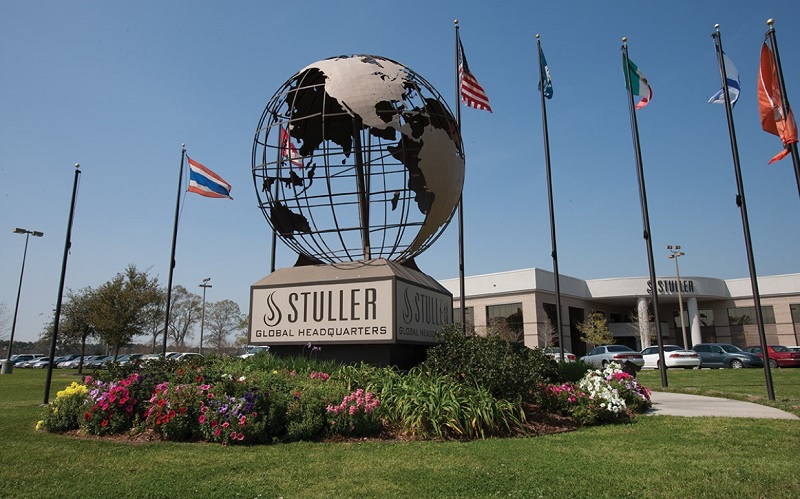
RAPAPORT... Ranked among the largest jewelry wholesalers, Louisiana-based Stuller Inc. has made some bold moves in the past year as it navigates the ongoing volatile market conditions. Among these include dropping its De Beers sightholder status and introducing a line of lab-grown diamonds. Rapaport News caught up with Stanley Zale, vice-president of diamonds and gemstones at Stuller, to discuss the implications of those decisions and the group’s perspective on the retail jewelry market.
Rapaport News: What are the challenges facing jewelers today?
Zale: We host Bridge seminars where we talk to jewelers about ways they can be more profitable in the current circumstances.
The market is changing. We’re all trying to figure out Millennials who it seems want customization and a meaningful experience from their jewelry purchase. So the dynamic of a customer walking into the jewelry store, seeing something they like and buying it has fallen by the way side. We offer solutions for that kind of evolution in jewelry purchases.
The first choice for the jeweler is to sell direct out of the case. Failing which, they can provide a piece from a prototype kit we provide. But, what if the customer says – “I like that piece in the kit but I’d like to see diamonds going part way down the shank, or I want it set with a marquise or a heart shape diamond rather than an oval.” The jeweler can manipulate the prototype piece using our software according to the customer’s requirements, send the file to us and we’ll have it ready within a week.
Rapaport News: How do you ensure that efficiency?

Zale: Conventional industry wisdom is it should take a month to supply a custom piece of jewelry. So, when Matt Stuller [the company’s founder] said he wants to cut that in half, the manufacturing group responded it needs twice as many people. But that can’t be the answer. The process is driven by a desire to deliver a value proposition to customers. No one wants to pay for waste. When you look at the process to make a piece of jewelry, the answer is not to polish the stone faster or set the ring faster. One has to examine the entire production process in its entirety and work out ways to eliminate waste.
Rapaport News: How does Stuller navigate such a fast-changing market given its large inventory?
Zale: Some of the dynamics play to our advantage. Any fluctuation in gold price presents an inventory risk for a jeweler. They tend to buy a lot of finished goods if the price of gold has gone down a lot. So if a jeweler bought a lot of jewelry at $1,800 an ounce, he’s got a problem at $1,200. But, it’s possible to hedge gold. You can’t hedge diamonds.
Until 10 years ago, diamond prices always went up - so you could buy a diamond, lock it in the vault, and make money. Today, diamond prices go up and down and expose jewelers to inventory risk. That presents an opportunity for Stuller because we can help jewelers operate efficiently as they don’t have to commit to inventory when working with us. We offer solutions to supply everything a jeweler might need just-in-time.
However, it also creates risk for us because we have to hold diamonds in stock. There’s always a tension between having the right amount of inventory and being over-stocked. We want to be priced just right to keep inventory moving but we also have to be priced at a sustainable level for the company.
Rapaport News: Has there been a shift in your inventory since the 2008 financial crisis?
Zale: We were a little heavier in 2 carats and larger diamonds before the crisis. Today, the sweet spot for us is from 0.50 to 1.50 carats. We place less of an emphasis on larger sizes, which we found are too speculative for our core customer and not what they’re buying in critical mass.
We supply diamonds from melee to 3 carats. We’re among the largest suppliers of melee in the U.S. We were a De Beers sightholder until a year ago when the disparity between rough and polished prices became too great. It hasn’t made sense to manufacture diamonds for a while so we stopped manufacturing.
Rapaport News: Does your inventory reflect the U.S. consumer market?
Zale: I’m not sure about that. Our sweet spot for color and clarity has been pretty constant at around H-color and SI2-clarity. That might be a little better than the average because I think the majors are selling more toward I1 clarities. The independents sell a slightly better diamond than the majors. They look to differentiate themselves from the majors and that’s one way of doing it.
Rapaport News: There are reports suggesting independents are exiting the industry. Why do you think that is?
Zale: There are fewer independents today than there were before. Their overall market share is smaller and has been eroding a little each year since 2008.
The major retailers have a lot of buying power. They can also advertise on a larger scale and are probably doing a better job reaching younger customers. The independent jeweler is generally second or third generation in a business which always did things in a certain way and they’re frustrated trying to crack the code of this new consumer.
The Diamond Producers Association found that Millennials want their own experiences and don’t want to be defined by ritualistic purchases. It can be hard for the independent jeweler to get past that and think differently.
Rapaport News: Is bridal still holding its own as the source of industry growth?
Zale: Bridal is a big growth area for us and we put a lot of energy into it. We’re developing new selling systems and give it priority with marketing. Bridal accounts for about half the total jewelry we sell.
Rapaport News: What was the thinking behind Stuller starting to offer lab-grown diamonds?
Zale: Our objective is to offer choice. If customers buy a ring they might ask for a natural diamond to go with it, a sapphire, ruby, or an emerald. Equally, they may also want a moissanite or a lab-grown diamond.
Rapaport News: Do you agree with the view that lab-grown diamonds will lose value as supply increases?
Zale: I don’t know what’s going to happen with the value, but I believe in the laws of supply and demand. If the price of lab-grown diamonds goes down so much that they become worthless, people will stop manufacturing them. Over time, a correct level will be found.
Rapaport News: How do you respond to claims that lab-grown diamonds are a more ethical product than natural diamonds?
Zale: The industry needs to do a better job telling the diamonds-do-good story.
The value of lab-grown diamonds is derived from the value we place on natural diamonds. Therefore, talking down natural diamonds or saying lab-grown diamonds are a more virtuous alternative does not help.
We’re not claiming that its eco-friendly or better than anything else. We’re just trying to give our customers what they might want. It’s not our place to make judgements about what someone puts in a piece of jewelry as long as it’s reasonable.
We abide by all the guidelines, rules and regulations set out by the Jewelers Vigilance Committee and Federal Trade Commission. If we feel it’s important to abide by all the industry rules then we can encourage our suppliers and manufacturers to behave in an equally responsible way. That’s what I want to see happen.
Rapaport News: Is that what motivated Stuller to join the International Grown Diamond Association?
Zale: I don’t want to see an adversarial relationship between lab-grown diamond companies and the rest of the industry. As responsible citizens, we have an opportunity to make a positive influence.
We'd like to see the lab-grown producers become part of the industry to the greatest extent possible. There’s no doubt the presence of lab-grown diamonds raises concerns for some people. I get that. The question is, what are we as an industry going to do about it? If we all work together, we have a better chance of resolving issues to everyone's mutual satisfaction.
* Pictures courtesy Stuller Inc.
|